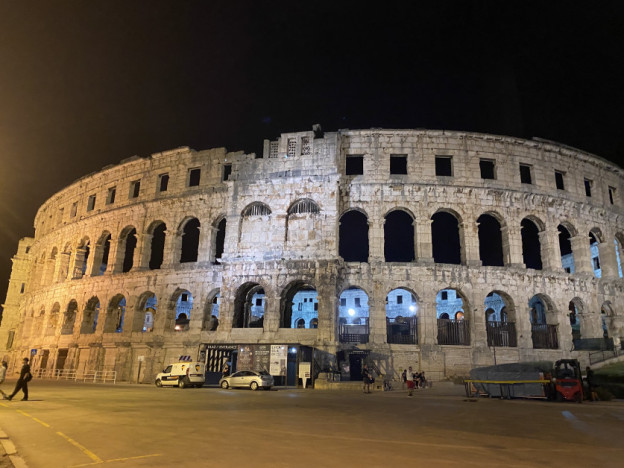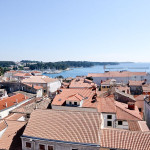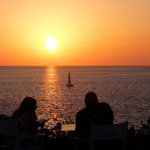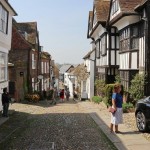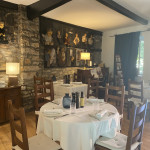Join Natasha Blair to discover Istria as she explores this beautiful region of Croatia
English people have yet to discover Istria on the North-Western side of Croatia. Littered with Roman remains, and a Venetian and Austria-Hungarian legacy, foodies will also benefit when visiting on the influence of the cooking from nearby Italy, and their soil to table philosophy.
Pula
The Capital, Pula is known for its Roman remains and military history. Built on numerous hills, the town prides itself on saying its seven, emulating Rome. Founded during the time of Julius Cesar, it has one of the largest Roman Colosseums in the world with its exterior walls still intact.
During the summer, a multitude of events from opera to boxing brings the arena to life with the use of spectacular lighting, and sound effects. Visiting its interior some of the original tiered seating is still intact and used today. The area where the gladiators gathered, now houses an exhibition on the production of olive oil, an industry the area is known for.
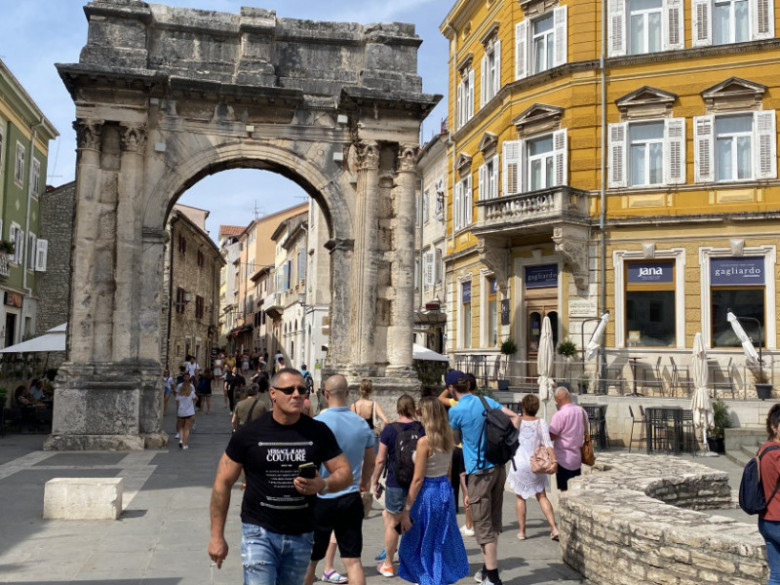
Roman remains are evident throughout the town. In the main square, the Temple of Augustus houses an exhibition dedicated to the Roman period. A Roman arch at the entrance to the old town, adjacent to a yellow painted building is where the Irish Novelist James Joyce once lived in the early1900s and leads to a pedestrian walkway filled with shops.
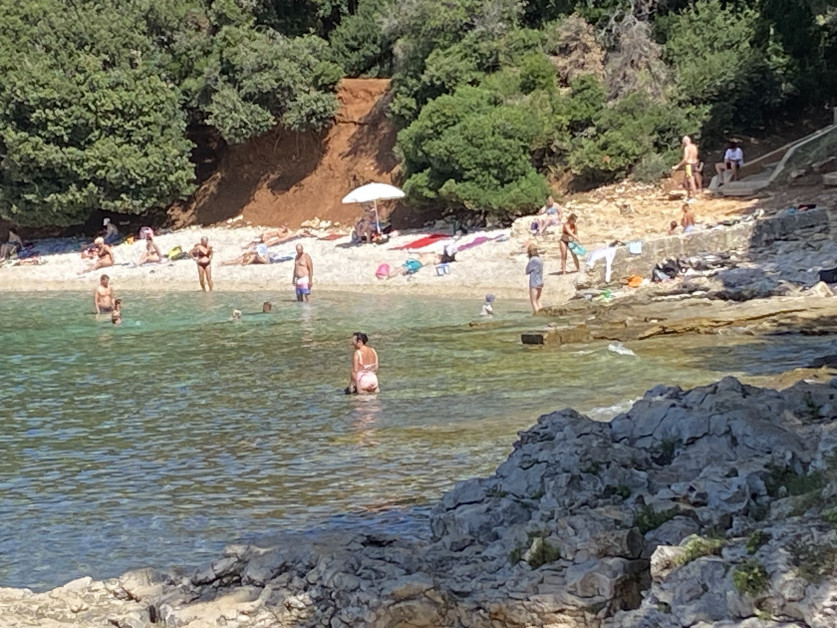
Pula became a major naval harbour during the time of the Austrian-Hungarian Empire which lasted until the end of the First World War. Between the two World Wars the town was then occupied by the Italians and used as a war arsenal In times gone-by, Pula was occupied by the Venetians, and under one of the fortress’s they built, there are still tunnels that are in use today.
The fortress houses a military museum with cannons positioned on its embankment. Out of the main centre, at Verudella, the town’s beach area, another fortress houses the town’s aquarium. The Adriatic Sea shimmers with clear blue, warm water during the summer months, and although the beaches are a variety of pebbles and rocks, this doesn’t deter visitors and locals alike. Cafes and bars can be found along this stretch while on the beach, vendors come by selling freshly cooked corn-on-the cob.
Although quantities produced are small Istria prides itself on the quality of its olive oil which is harvested without pesticides and respected as one of the best quality producers. An Olive oil museum is dedicated to its history which dates to the Roman times. Tastings, which guide visitors through the art of knowing how to taste the various oils, and what to look for, are paired with food.
Rovinj
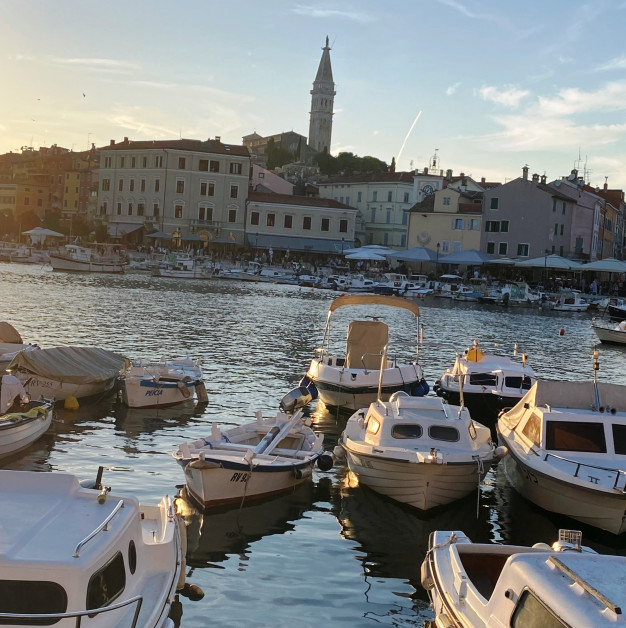
Continuing our tour to discover Istria, further along the coast, Rovinj is a very pretty seaside town with the buildings painted in shades of yellow, brown and red, and with a harbour filled with boats. Its picturesque old town where the activity is, is built on a promontory surrounded by the sea. Steep, winding allies filled with restaurants, gift shops, and boutique hotels lead to, at its pinnacle, the Venetian baroque Church of St. Euphemia. Surrounded by a ninety-degree terrace, there are sweeping views of the bay where occasionally dolphins can be spotted.
Vodnjan
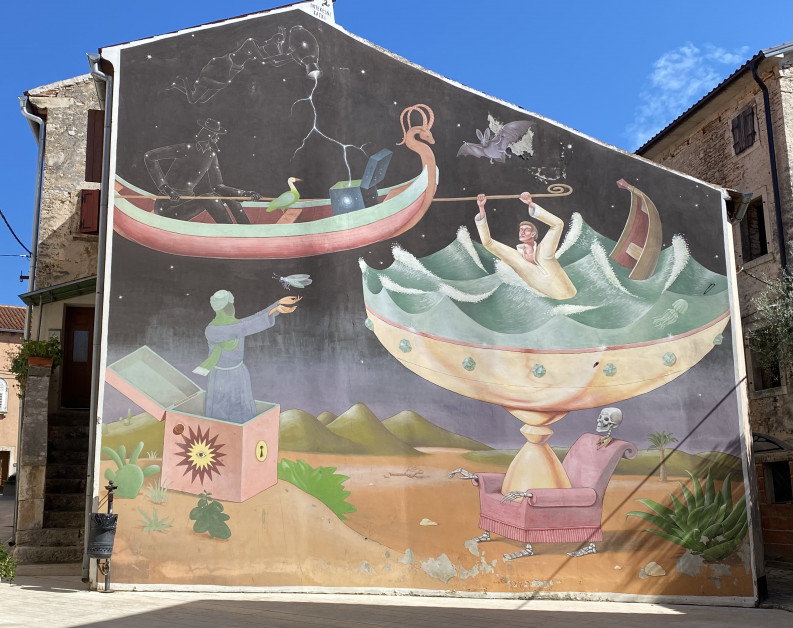
Away from the tourist restaurants on the coast, Istria prides itself on producing meals sourced locally. Inland at Vodnjan, a town known for its wall art, there is also has a family-run restaurant Vodnjanka which specialises in traditional food, with the ingredients sourced locally.
Also in Vodnjan, I met Izabella whose family own the wine producer, Teraboto, and offer both olive oil and wine tastings. The family produce their own olive oil, but their main industry or hobby as Izabela describes it, are their vineyards where they grow, produce, and bottle wine.
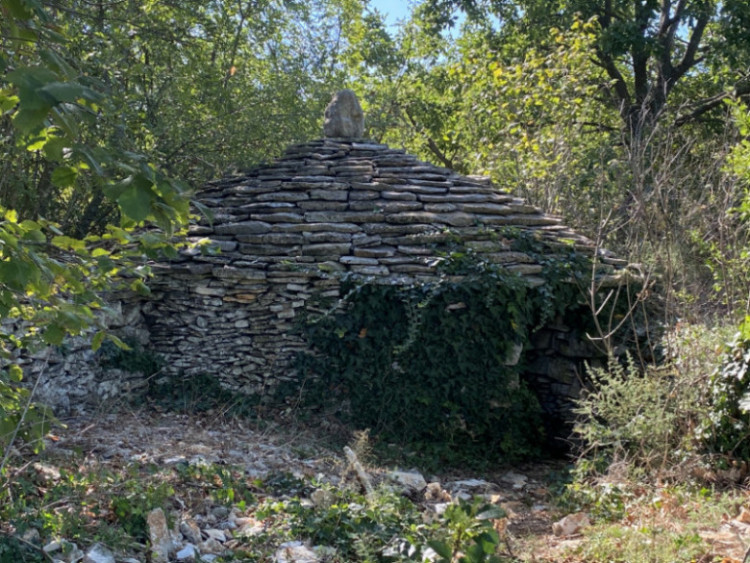
Her husband Dario studied to be an Oenologist, and together they have expanded their small holding to produce several varieties of grapes including the local white Malvasia.
On their land, hidden by overgrowth, they discovered a stone stacked wall, and several kazuni, low stone buildings dating back 5,000 years. Teraboto is very much a family business, and at her home which is also where the vats are kept, I met her father who does the bottle and labelling by hand. The olive oil and wine tastings in their back garden finished with a delicious traditional cake baked by her mother using their own olive oil, almonds from their trees, and eggs from a neighbour’s chickens.
Motovun
As well as olive oil and wine, in the countryside near Motovun, the preserved hilltop medieval town, the area is famous for its black and white truffles. Black truffles can be found year-round in the hills, but the more elusive white can only be sniffed out between September and December.
The family run business, Karlic produces a variety of products from its truffles, trains dogs to truffle hunt, and has even planted their own forest of truffle producing trees nearby. When I arrived, a number of dogs of varying breeds, were sitting happily in their cages in the garden.
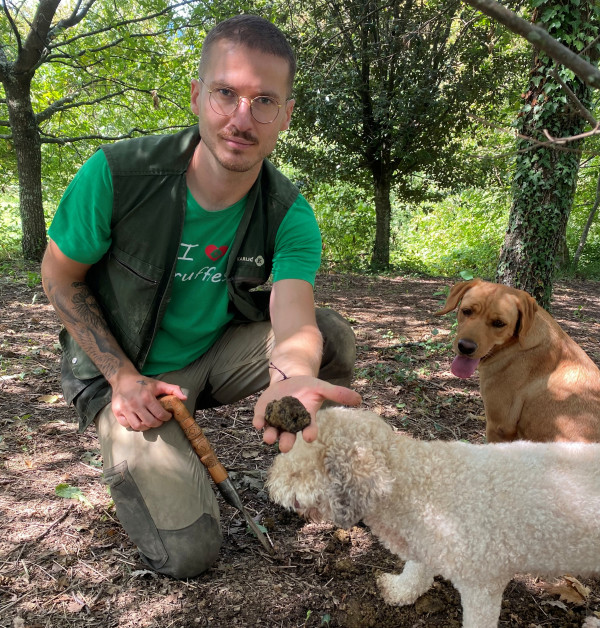
We were driven in a jeep by truffle hunter Armin, accompanied by two dogs, to their nearby forest, and within minutes both dogs had unearthed truffles. The ease at which the dogs found the truffles made us wonder if occasionally some were replanted, waiting to be sniffed out!
Whatever, on our return in a large airy restaurant on the site, we witnessed a demonstration of how to cook with truffles, and then sat down to eat a delicious, truffle infused frittata. The eggs which came from the grandmother’s chickens, were topped with truffle shavings, and lots of Parmesan cheese, with extra truffle infused oil on the side. One of the most delicious and memorable dishes I have ever eaten.
Brijuni
Brijuni, an archipelago of 14 islands is now a National Park. The largest island, Veli Brijuni, an idyllic retreat has only two hotels, and is mainly visited on a three hour or longer visit. Boats ferry visitors from the coastal town of Fazana. The island has an 18-hole par 72 golf course with one hole that crosses the sea.
During his lifetime, Tito had a summer home on Vanga, one of the islands which is still used by high-ranking Government officials. On Veli Brijuni, a small zoo houses animals or their descendants given to Tito on State visits. An elephant remains from Tito’s time but now there are also sheep, donkeys, lamas, and ostriches. Roman remains can be seen on the island as well as dinosaur footprints. A museum has an exhibition of photographs of the famous people, including Sophie Loren, who Tito associated with. Dr Lenz, the island’s doctor for over 30 years, was renowned for his medicinal prowess.
A display in his home, originally the boathouse, includes notes from famous people who used his services such as author James Joyce, and artist Gustav Klimt.
The island can be visited on a tour which includes a train ride around the island, on foot or by hiring a golf buggy, bicycle or scooter.
Cape Kamenjak
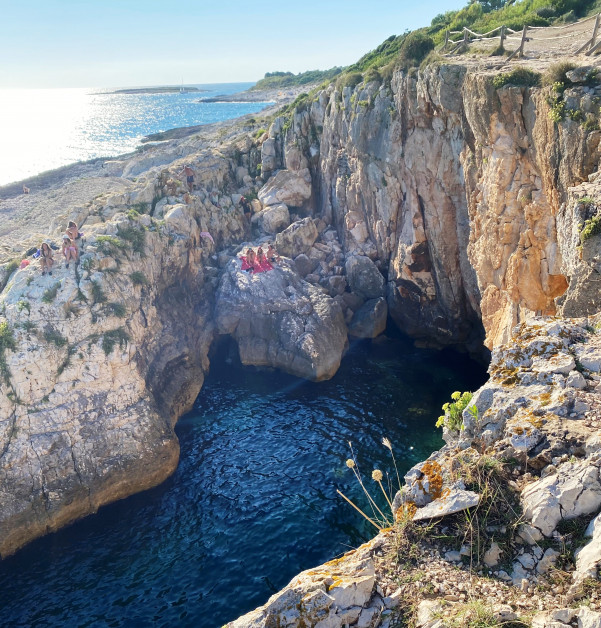
My final suggestion to discover Istria is Cape Kamenjak on the southern tip of Istria is a protected site with a 30 km long indented coastline. A haven for nature lovers, the area is uncultivated, and although there is a track for cars, it is also frequented by hitchhikers, quads, and people on mountain bikes. The coastline is made up of small coves and beaches with crystal clear water. One of the attractions, and to my mind requiring a lot of courage, is to jump 15m into the sea where there is a cave large enough to swim in which can only be explored from the sea.
An area popular for aqua sports including windsurfing, and kayaking. Hidden in the rocks, there are lots of beach bars and cafes, playing music, which have games, and distractions for both adults and children. The Safari bar, in the very South, was voted one of the best beach bars in Europe.
In the Park there is an Istrian Agro Tourism Farm where children can come and see cows, sheep, donkeys, horses, and even a cockatoo. Their restaurant surrounded by olive trees, where of course they make their own olive oil, has a huge spit where, when I visited, a pig was being roasted.
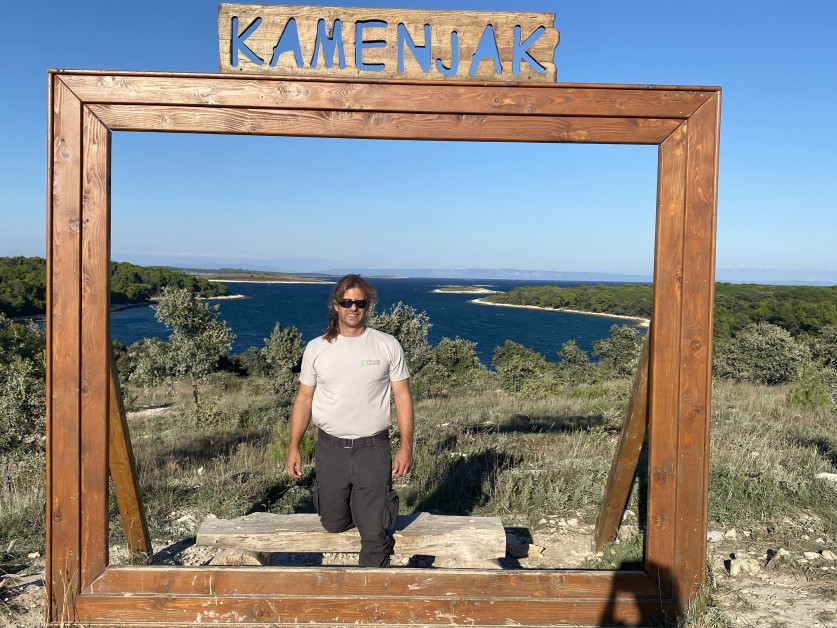
Istria is a part of Croatia where each corner offers a new perspective. If you love history, the countryside, and are inspired by the principles of soil to table food, you will relish coming here to discover Istria.
All images (C) Natasha Blair
Tell me more about how to discover Istria.
Best time to discover Istria is from Spring to mid-October. Public transport is infrequent, but as the roads are good, renting a car is definitely worth the expense.
For more information on Natasha’s discover Istria guide and much more on this beautiful region please visit Experience Istria.
How to get to discover Istria
RyanAir, BA, and Easyjet have direct flights into Pula.

